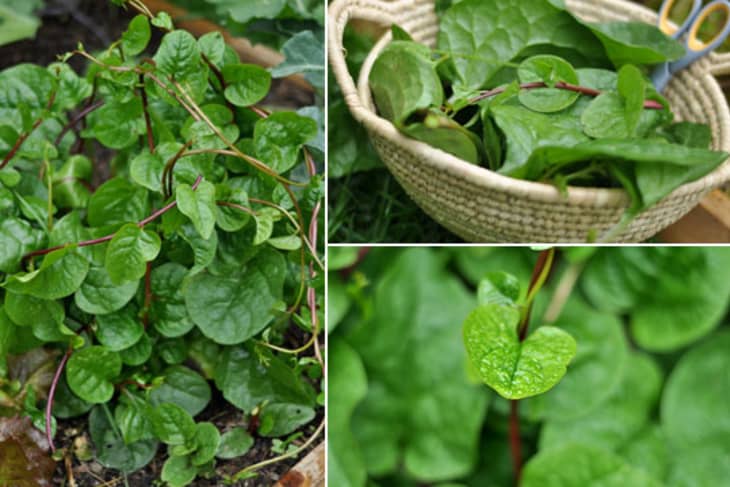What Is Malabar Spinach?
Did you know that salad really isn’t a summer food? Yes, we can find tidy greens in the supermarket year round, but most lettuce varieties — as well as our beloved arugula — really don’t like summer heat. Unless grown under inside or under cover, most greens bolt, wilt, fail to germinate, and basically pout all summer long until the cooler weather of early fall arrives. So the real stars of summer salads and sautés are found elsewhere. Enter Malabar spinach.
Thick, fleshy leaves of Malabar spinach.
Unless you’re in the cool (and moist!) Northeast, summer is just not a great time for salad greens in the garden. Most salad greens you find in the supermarkets are grown far away with a great expense of cooling and irrigating water. You can compensate for greens’ dislike of heat with shady row covers, extra moisture, and heat-resistant breeds of lettuce, but many of the best lettuce varieties are really not happy in the summertime. So we grow Malabar spinach.
Malabar spinach (Basella alba or ruba, a redder variety) is actually not spinach at all. It’s not even related! Well, OK, it’s distantly related, but it doesn’t taste much like spinach at all. When it’s raw Malabar spinach has very fleshy, thick leaves that are juicy and crisp with tastes of citrus and pepper. When cooked, though, Malabar spinach does look and taste a lot more like regular spinach. It doesn’t wilt as fast, though, and it holds up better in soups and stir-fries.
A rampant patch of Malabar spinach vines in my salad patch, right in between cauliflower, chard, and some red leaf lettuce that finally bounded up after days of cool rain.
It is super easy to grow, too, and it really leaps when the temperatures hit 90°F and over — just the time when the rest of your salad greens are descending into bitterness and grumbling.
A few things to note, though, if you decide to grow Malabar spinach. First of all, it vines. So give it something to climb on. This can actually be helpful for little gardens that need to grow vertically. Secondly, some people have found it very invasive. If you are in a warm climate, where it won’t die off in a hard frost, keep it contained and pull up any spreading shoots.
And if you can’t grow it, then you can probably find it at Asian or Indian groceries. It’s a popular green in Asian, Indian, and even African cuisine — although in Africa they tend to eat the tender vining shoots more than the leaves themselves.
One last tidbit: according to Wikipedia, one of Malabar spinach’s Chinese names literally means flowing water vegetable.
Have you ever tried Malabar spinach? How do you like to cook it? I enjoy it mixed in to salads, although its meaty texture when raw isn’t appreciated by everyone.
